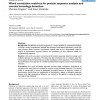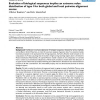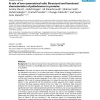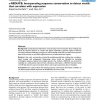BMCBI
2008
13 years 4 months ago
2008
Background: The ESTree database (db) is a collection of Prunus persica and Prunus dulcis EST sequences that in its current version encompasses 75,404 sequences from 3 almond and 1...
BMCBI
2008
13 years 4 months ago
2008
Background: Classification of protein sequences is a central problem in computational biology. Currently, among computational methods discriminative kernel-based approaches provid...
BMCBI
2008
13 years 4 months ago
2008
Background: Repeat-induced point mutation (RIP) is a fungal-specific genome defence mechanism that alters the sequences of repetitive DNA, thereby inactivating coding genes. Repea...
BMCBI
2008
13 years 4 months ago
2008
Background: Confidence in pairwise alignments of biological sequences, obtained by various methods such as Blast or Smith-Waterman, is critical for automatic analyses of genomic d...
BMCBI
2008
13 years 4 months ago
2008
Background: Detecting conserved noncoding sequences (CNSs) across species highlights the functional elements. Alignment procedures combined with computational prediction of transc...
BMCBI
2008
13 years 4 months ago
2008
Background: It has been previously shown that palindromic sequences are frequently observed in proteins. However, our knowledge about their evolutionary origin and their possible ...
BMCBI
2008
13 years 4 months ago
2008
Background: Computational methods for characterizing novel transcription factor binding sites search for sequence patterns or "motifs" that appear repeatedly in genomic ...
BMCBI
2008
13 years 4 months ago
2008
Background: Motif finding algorithms have developed in their ability to use computationally efficient methods to detect patterns in biological sequences. However the posterior cla...
BMCBI
2008
13 years 4 months ago
2008
Background: By using a standard Support Vector Machine (SVM) with a Sequential Minimal Optimization (SMO) method of training, Na
BMCBI
2008
13 years 4 months ago
2008
Background: DNA microarrays contain thousands of different probe sequences represented on their surface. These are designed in such a way that potential cross-hybridization reacti...






